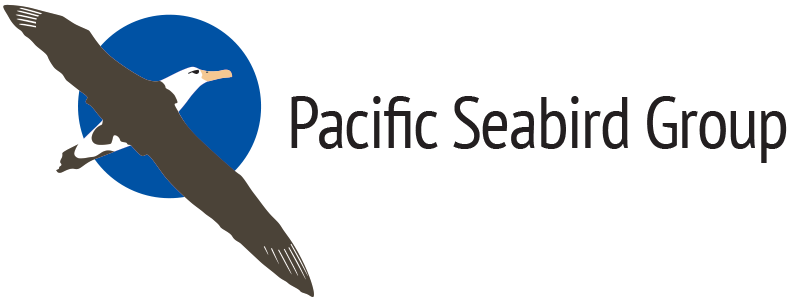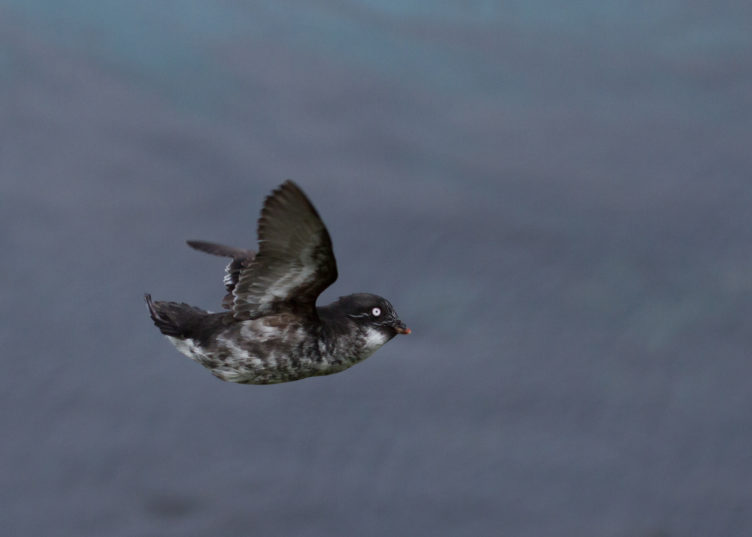McIver et al. (2024)
Author Information
Jim Baldwin, Adam Duarte, and Martin Raphael: U.S. Forest Service
Katherine Fitzgerald, Colleen Holland, Teresa Lorenz, William McIver, and Daryl Van Dyke: U.S. Fish and Wildlife Service
Monique Lance and Scott Pearson: Washington Department of Fish and Wildlife
Kim Nelson: Oregon State University
Craig Strong: Crescent Coastal Research
Northwest Forest Plan Marbled Murrelet Effectiveness Monitoring Program
The goal of the Marbled Murrelet Effectiveness Monitoring Program (EMP) is to evaluate the effectiveness of the Northwest Forest Plan (NWFP) in maintaining and restoring marbled murrelet (Brachyramphus marmoratus; MAMU) populations and nesting habitat within the NWFP area, from the Canada–Washington border south to northern California. The information from this program, along with information collected in Conservation Zone 6, is also used to inform management decisions to assess murrelet recovery within the entire listed portion of its range. The Marbled Murrelet Effectiveness Monitoring Program operates with two teams: population and habitat monitoring. Monitoring program members include: Jim Baldwin, Adam Duarte and Martin Raphael (U.S. Forest Service); Katherine Fitzgerald, Colleen Holland, Teresa Lorenz, William McIver and Daryl Van Dyke (U.S. Fish and Wildlife Service); Monique Lance and Scott Pearson (Washington Department of Fish and Wildlife); Kim Nelson (Oregon State University); and Craig Strong (Crescent Coastal Research).
This program has estimated marbled murrelet population size and trends during the breeding season between the state of Washington and San Francisco Bay, California, since 2000. This monitoring program uses at-sea line transect surveys within 8 km of the Washington, Oregon, and northern California coastlines in the area covered by the NWFP. In 2023, at-sea surveys were conducted in Conservation Zone 2 (Western Washington Coast: Cape Flattery to the Columbia River mouth) and Conservation Zone 4 (Siskiyou Coast: Coos Bay, Oregon, to the southern boundary of Humboldt County, California), using established long-term protocols. Conservation Zone 2 surveys were conducted by excellent survey biologists Kelly Beach, Kristin Saksa, Sarah Tanedo, and Jackson Winn; the surveys were led by Monique Lance and Scott Pearson. Surveys in Conservation Zone 4 were supervised by Craig Strong, with Darell Warnock as team lead and crew members Dawn Barlow, Teresa Bird, Alex Cook, Rob Fowler, Jeff Jacobsen, Deborah Jacques, and Mark Marks. In February 2024, the MAMU EMP provided a summary report on monitoring results from at-sea surveys for marbled murrelets in 2023. This and other program reports can be accessed online here. In 2024, at-sea surveys will be conducted in Conservation Zone 1 (Puget Sound: Strait of Juan de Fuca, San Juan Islands and Puget Sound) and Conservation Zone 3 (Oregon Coast: Columbia River mouth to Coos Bay). In 2023, the population team began discussions with researchers from Oregon State University and California Polytechnic Humboldt regarding their potential involvement in conducting at-sea surveys, starting in 2025.
In addition, the Marbled Murrelet Effectiveness Monitoring Program has estimated marbled murrelet nesting habitat abundance and trends in the NWFP area since 1993. In 2023, the nesting habitat team began the process of evaluating nesting habitat for the 1993–2022 time period, in preparation of the “30-year report” under the NWFP’s Effectiveness Monitoring Program.






